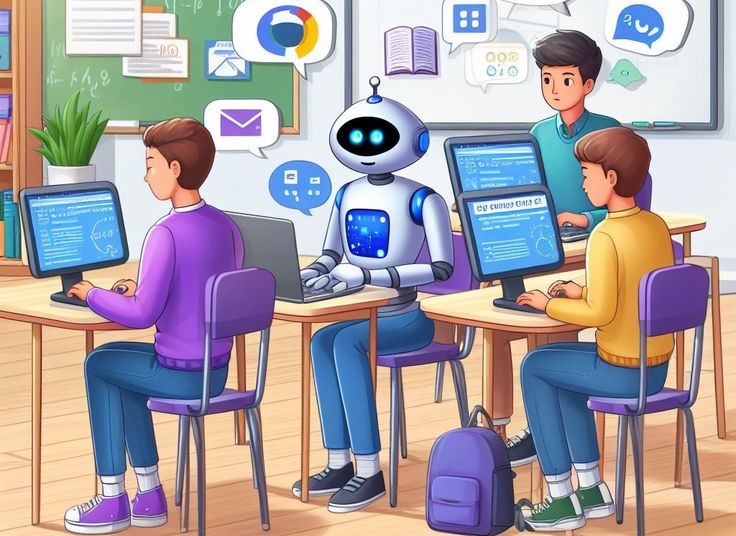The advent of ChatGPT, a powerful language model developed by OpenAI, has sent shockwaves through the educational landscape. This sophisticated AI can generate human-like text, engage in conversations, and even write creative content, raising significant questions about its potential impact on learning and assessment. While some herald ChatGPT as a revolutionary tool for personalized learning and enhanced engagement, others view it as a potential threat to academic integrity and traditional pedagogy.
ChatGPT: A New Frontier in Learning?
The potential benefits of ChatGPT in education are undeniable. Its ability to generate personalized learning materials, provide instant feedback, and offer diverse learning perspectives can revolutionize how students learn. Imagine a scenario where a student struggling with a complex math concept can interact with ChatGPT, asking questions, receiving step-by-step explanations, and even generating practice problems tailored to their individual needs. This personalized approach can make learning more engaging and accessible, catering to different learning styles and pacing.
Furthermore, ChatGPT can act as a powerful tool for creative exploration. Students can use it to generate stories, poems, or even script dialogues, fostering their imagination and developing their writing skills. This dynamic interaction can ignite a passion for learning by providing a platform for creative expression and exploration.
The Challenges of AI in the Classroom
However, the integration of ChatGPT into education also presents challenges. The most pressing concern revolves around academic integrity. Students could potentially use ChatGPT to write assignments, bypassing the critical thinking and analytical skills that are essential for learning. This raises ethical questions about the role of AI in education and the responsibility of educators to ensure academic integrity.
Another concern is the potential for AI to exacerbate existing educational inequalities. Students with access to technology and resources might be able to leverage ChatGPT to their advantage, while those without may be left behind. This disparity could further widen the gap between students, creating an uneven playing field.
Navigating the Future: A Collaborative Approach
The key to harnessing the potential of ChatGPT while mitigating its risks lies in embracing a collaborative approach. Educators need to adapt their teaching strategies, fostering critical thinking and problem-solving skills, and emphasizing the importance of original work. This can involve integrating ChatGPT into learning activities in a way that encourages collaboration, critical analysis, and creative expression. For instance, teachers can ask students to use ChatGPT to generate initial ideas for essays or research papers, then engage in discussions about the strengths and weaknesses of the AI-generated text, ultimately encouraging students to craft their own original and nuanced arguments.
Moreover, educators must engage in open discussions with students about the ethical implications of using AI tools. This open dialogue can help students understand the potential pitfalls of using ChatGPT to write assignments and develop a sense of responsibility for their academic work.
Beyond the Hype: The Future of Education
ChatGPT is not a magic bullet for educational challenges, but it has the potential to transform learning if used strategically and ethically. It can be a powerful tool for personalized learning, creative exploration, and fostering student engagement. However, the responsibility lies with educators to guide students in using AI responsibly, promoting critical thinking, and ensuring academic integrity.
The future of education lies in embracing a collaborative approach, where AI tools like ChatGPT are integrated thoughtfully and ethically, promoting genuine learning and intellectual growth. This requires a shift in mindset from educators, embracing technology as a partner in the learning process rather than viewing it as a threat. Ultimately, the goal should be to leverage the power of AI to enhance the learning experience for all students, fostering critical thinking, creativity, and a lifelong love of learning.
In Conclusion
ChatGPT presents a unique opportunity to reimagine the educational landscape. By embracing a collaborative approach, educators can harness the power of this technology to personalize learning, foster creativity, and cultivate a new generation of critical thinkers. However, it is crucial to address the ethical concerns surrounding AI in education, ensuring that technology empowers learning rather than undermines it. Ultimately, the future of education lies in a balanced approach, leveraging the potential of AI while upholding the core values of academic integrity and a commitment to genuine learning.
Here are some additional considerations:
- The Role of AI in Assessment: How can educators design assessments that are both challenging and resistant to AI manipulation?
- The Need for Digital Literacy: Students need to be equipped with the skills to critically evaluate AI-generated content and understand the limitations of AI.
- Collaboration and Shared Responsibility: Open dialogue between educators, researchers, and policy makers is essential to shape the responsible use of AI in education.
Actively engaging with these questions and fostering a culture of ethical AI usage can ensure that ChatGPT and other AI tools empower students to become successful learners in the 21st century.
